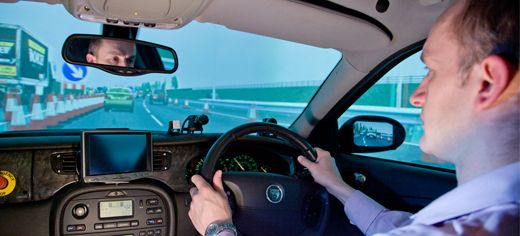
The way we drive could help us understand how animals make their way.
The research, published in the journal Royal Society Open Science, sheds light on how our brains process what we see when at the wheel, as well as giving important insights into why animals take particular paths of travel.In the research project, funded by the Engineering and Physical Sciences Research Council, researchers from Leeds’ School of Psychology and the Institute for Transport Studies used a virtual reality experiment to test whether human steering in a driving simulator was influenced by visual speed signals.
The textured ground either side of the road – on the inside and outside of bends – was manipulated to move artificially faster or slower than the driving speed.
Drivers’ steering was found to respond to the average ground speed, irrespective of which side moved faster or slower.
The researchers concluded that the human brain uses the ground movement signal from across the whole of the scene to guide steering, and not just the road edges.
Dr Richard Wilkie, of the School of Psychology, who led the research team, said: “This research gives us not just an understanding of the way humans drive, but may also give an insight to how insects, for example, choose their flight paths.
“It is not just a case of looking at the road edges and steering accordingly. The brain processes information from the whole visual scene moving past the eyes, known as optic flow, in helping select a path.”
The findings are surprising because road edges alone provide enough information for successful steering, but the brain also uses flow speed information to guide steering.
Further information
The research paper, “The need for speed: global optic flow speed influences steering,” by Kountouriotis et al, is available from the University of Leeds press office.
For more information, contact the University of Leeds press office on 0113 343 4031 or pressoffice@leeds.ac.uk